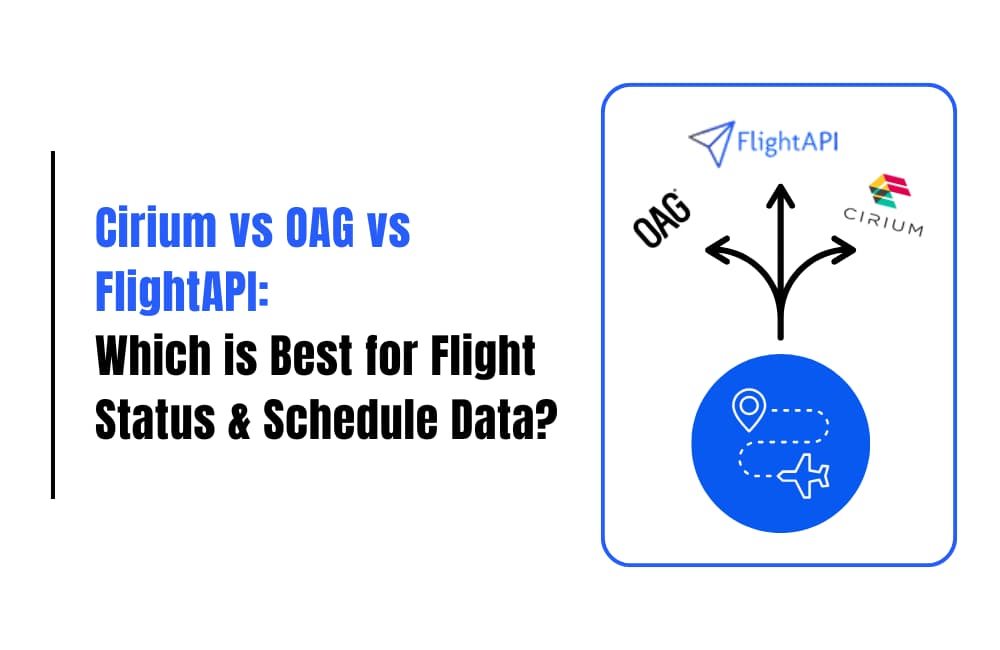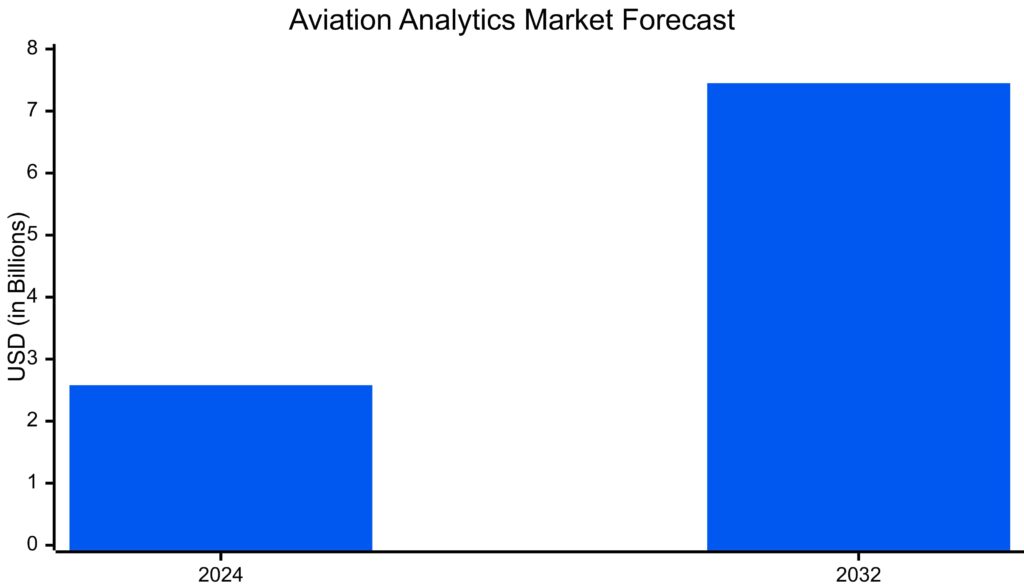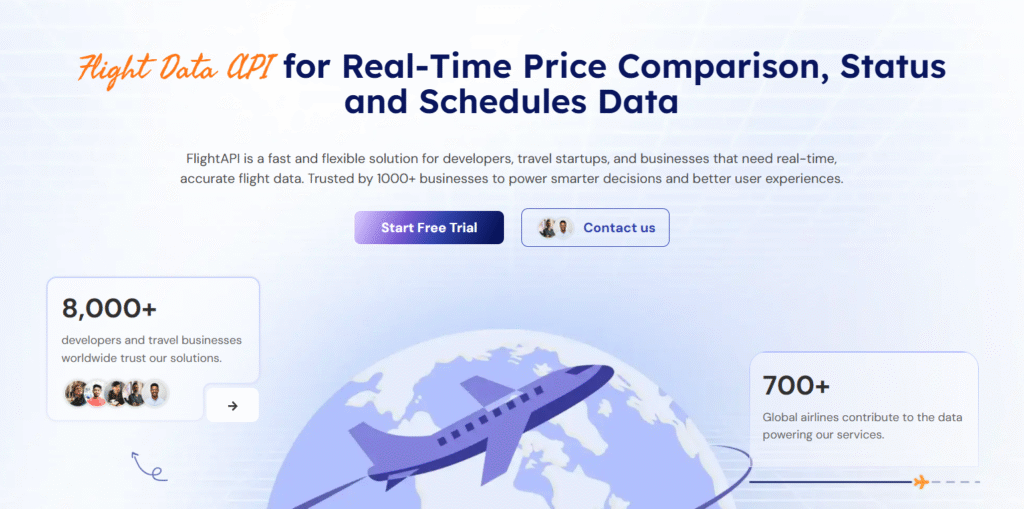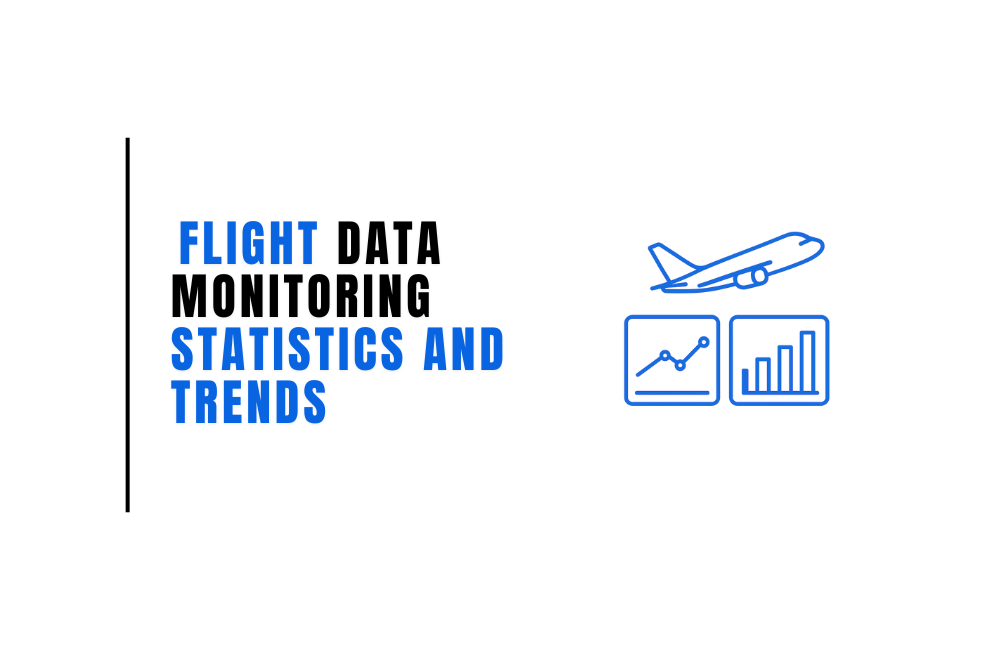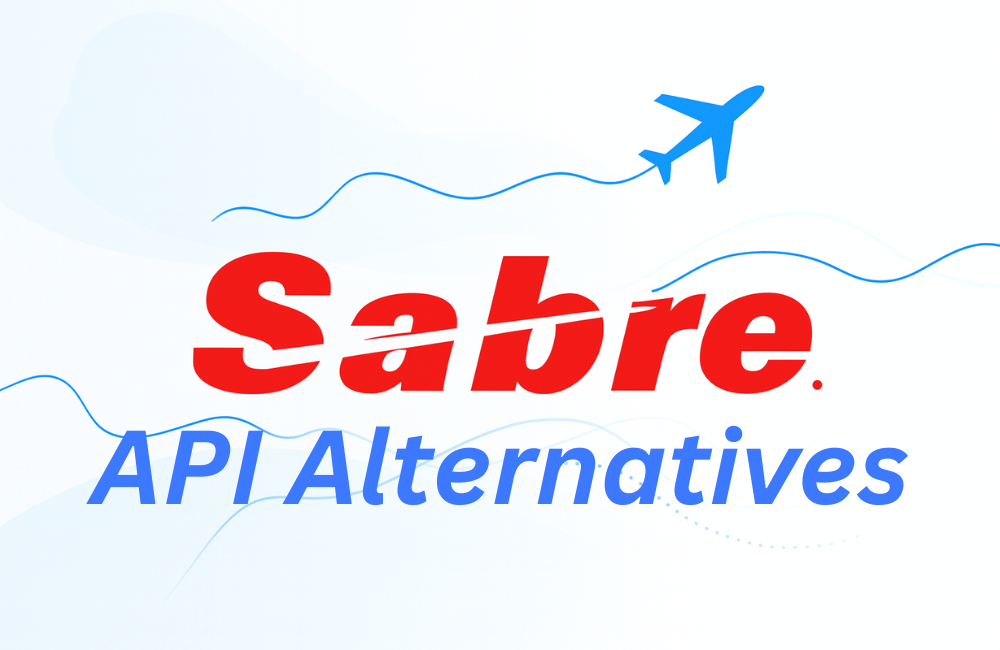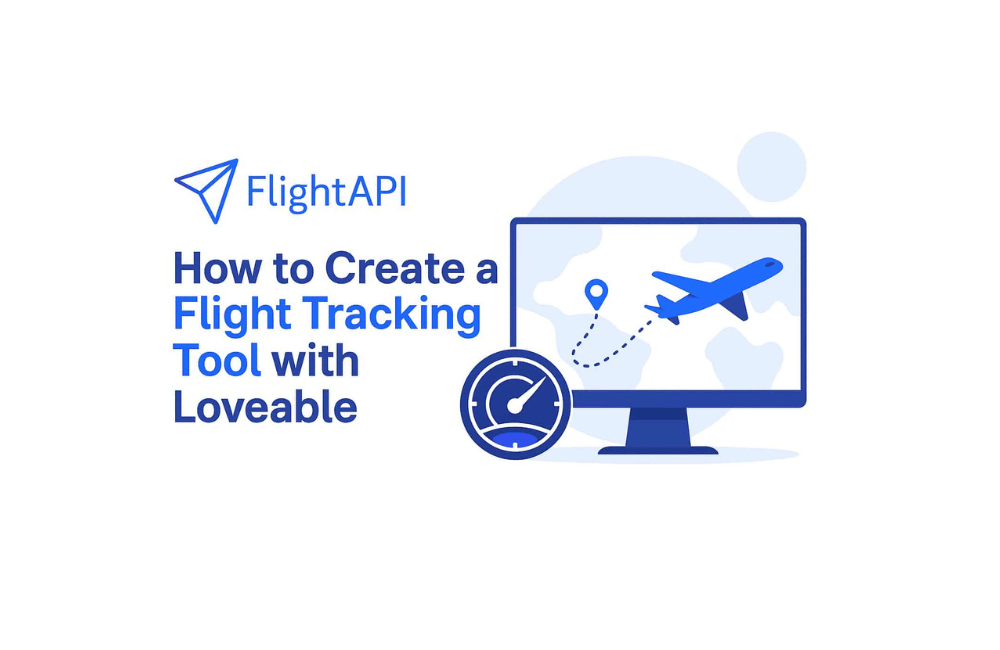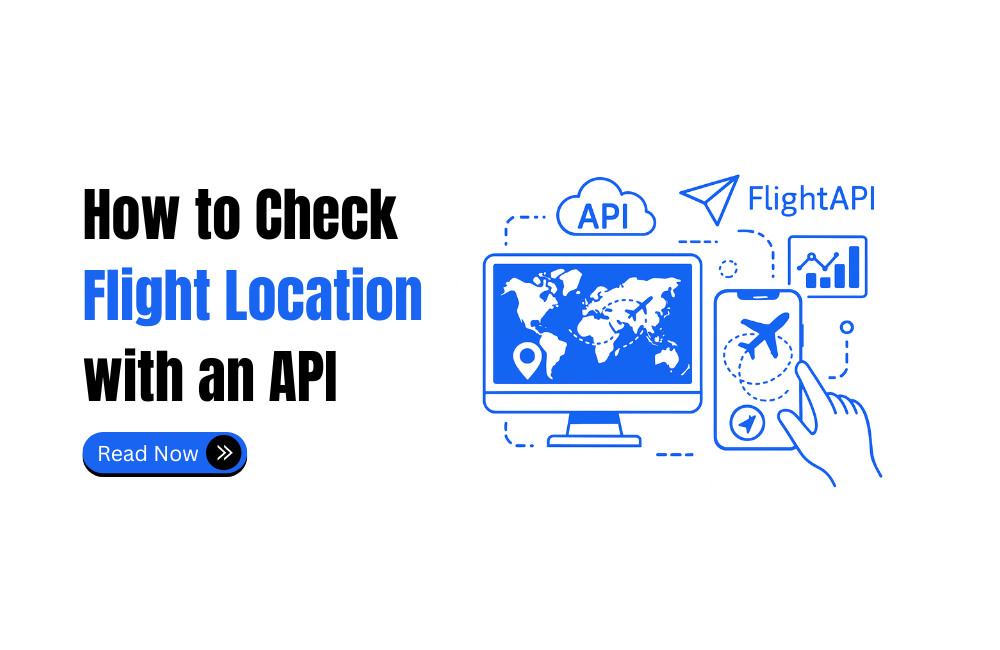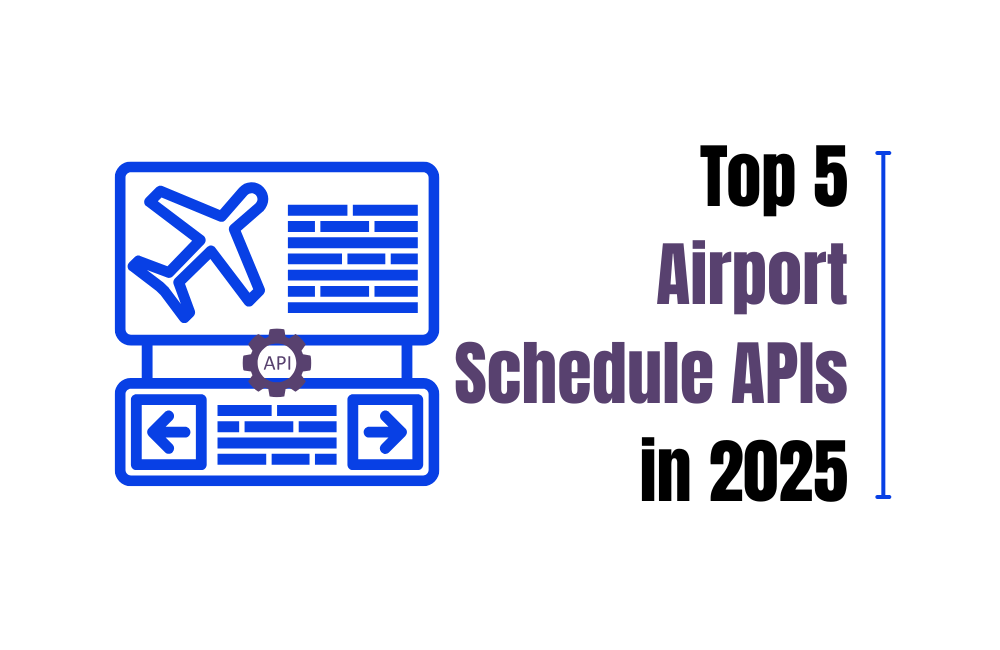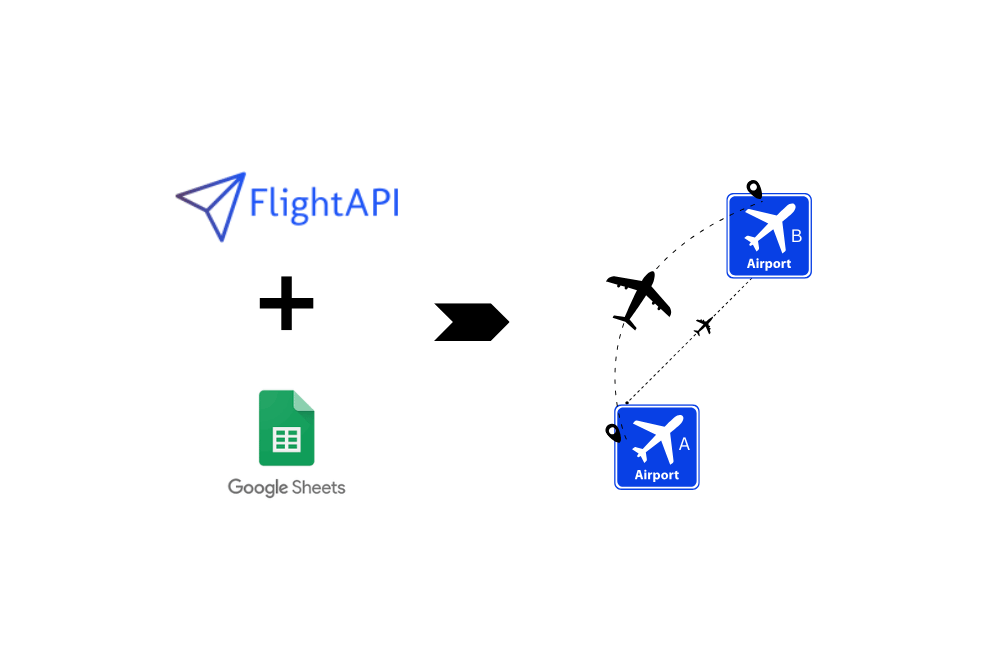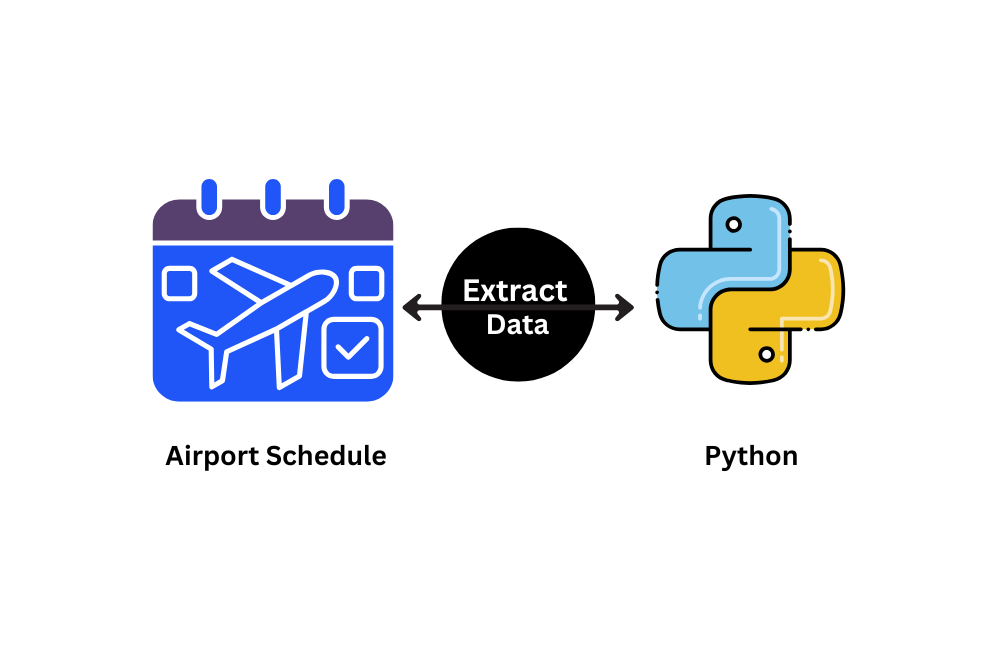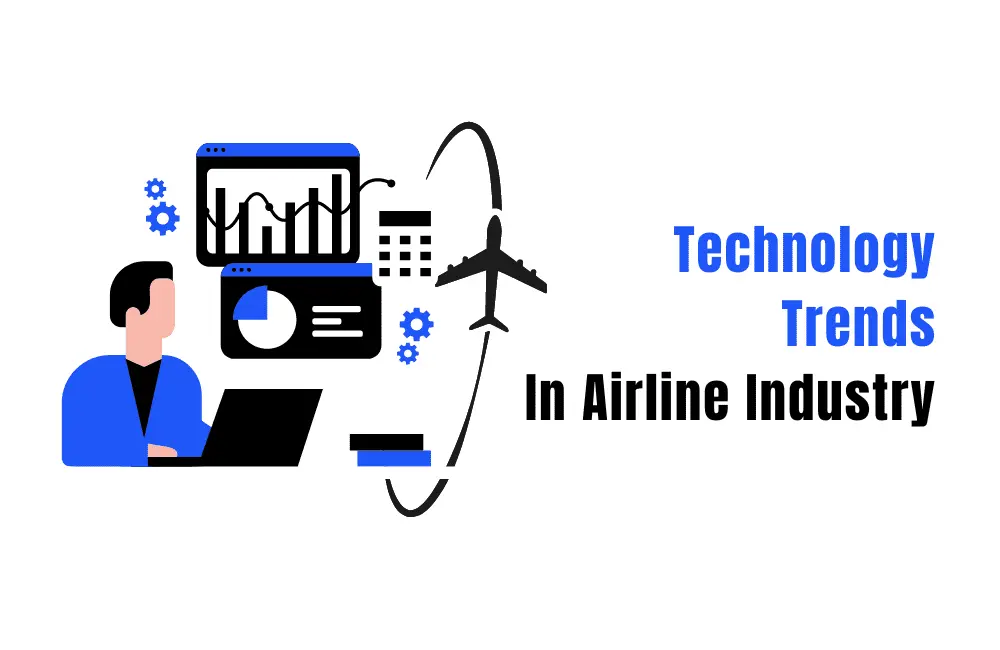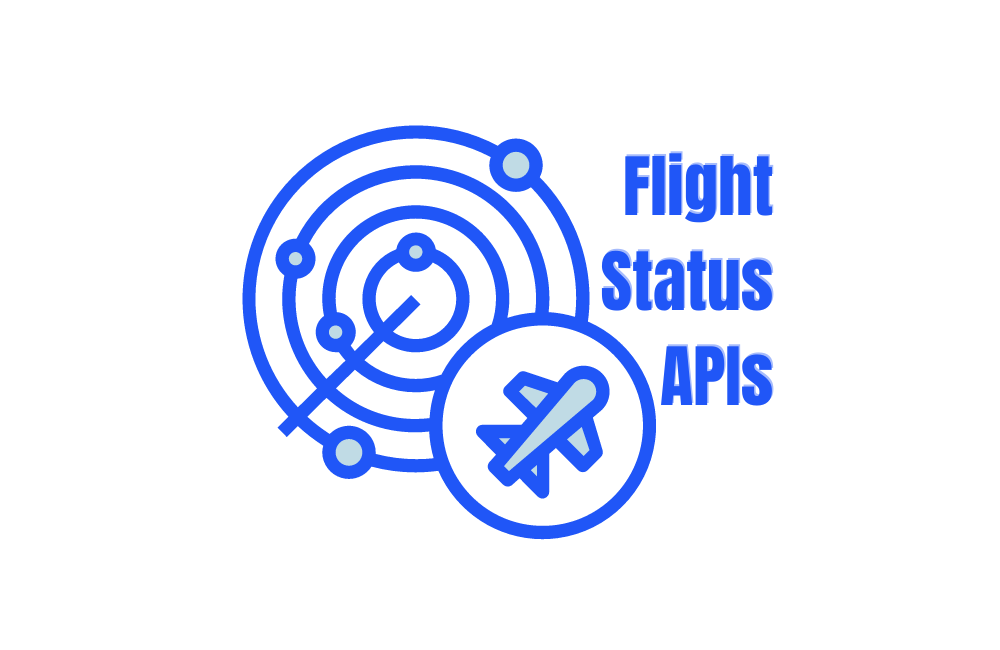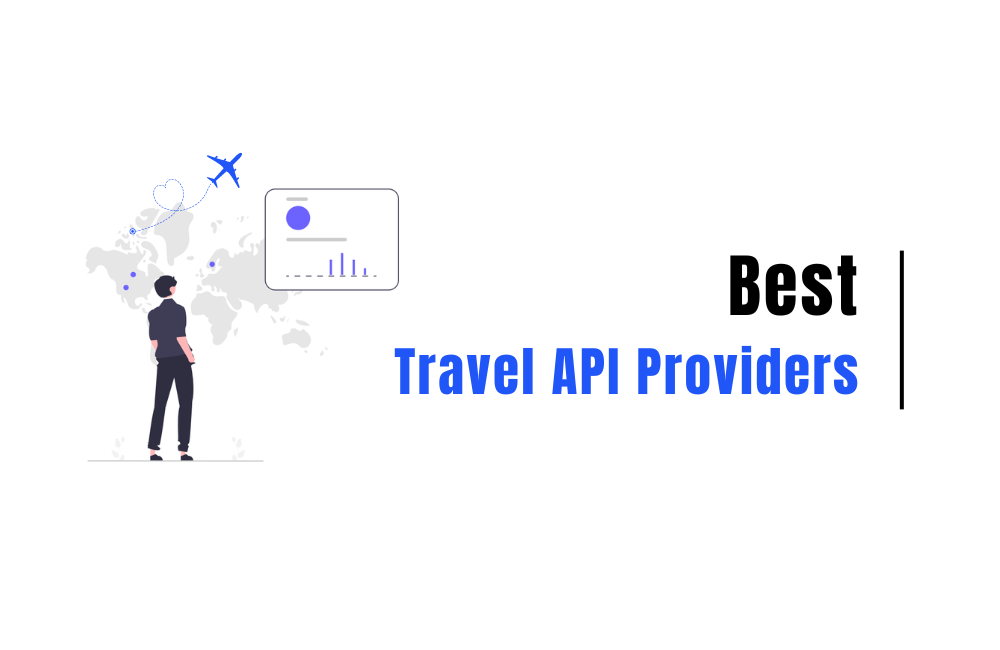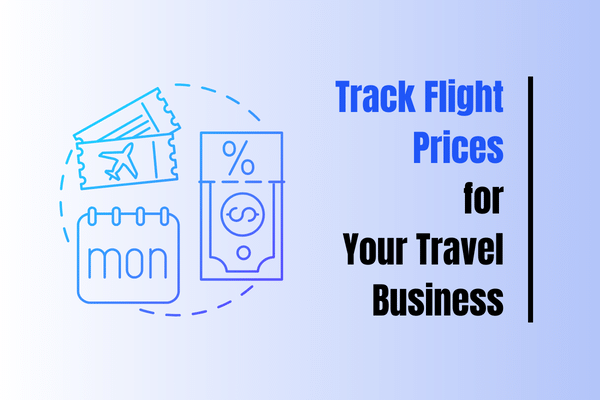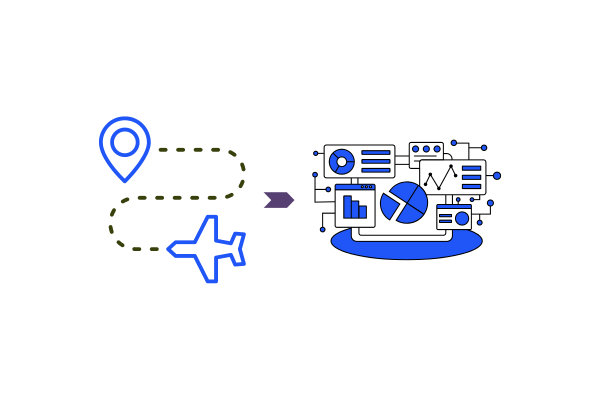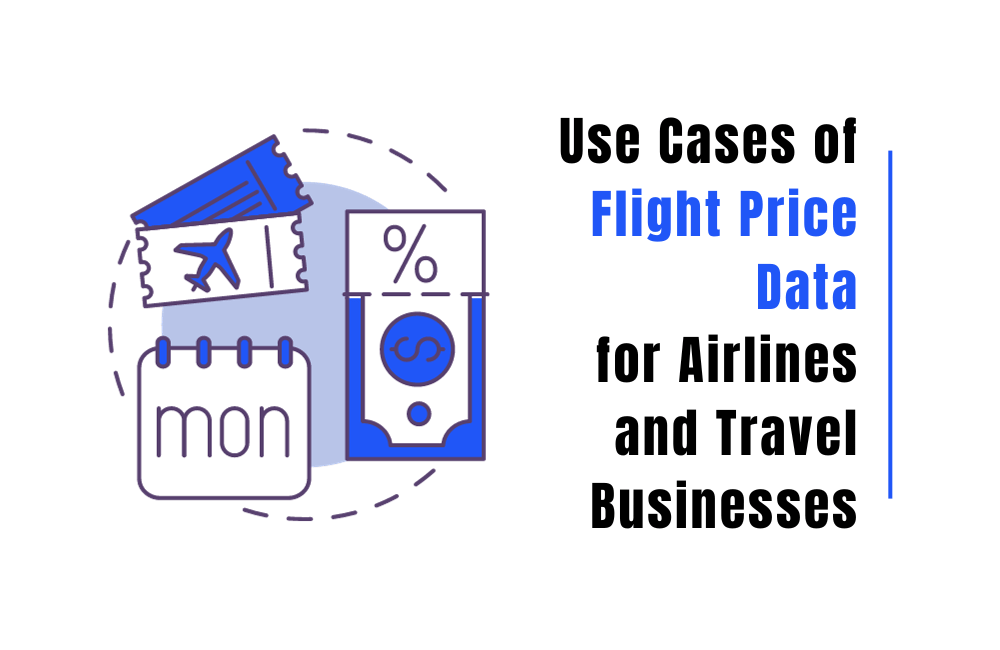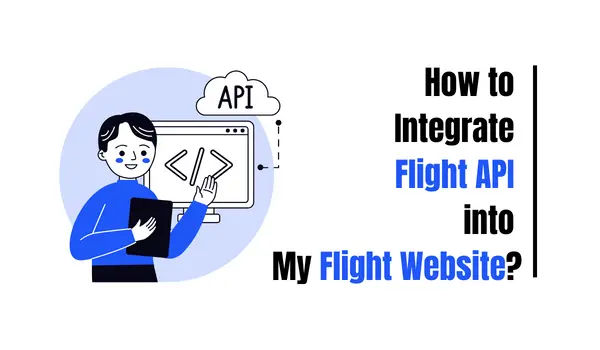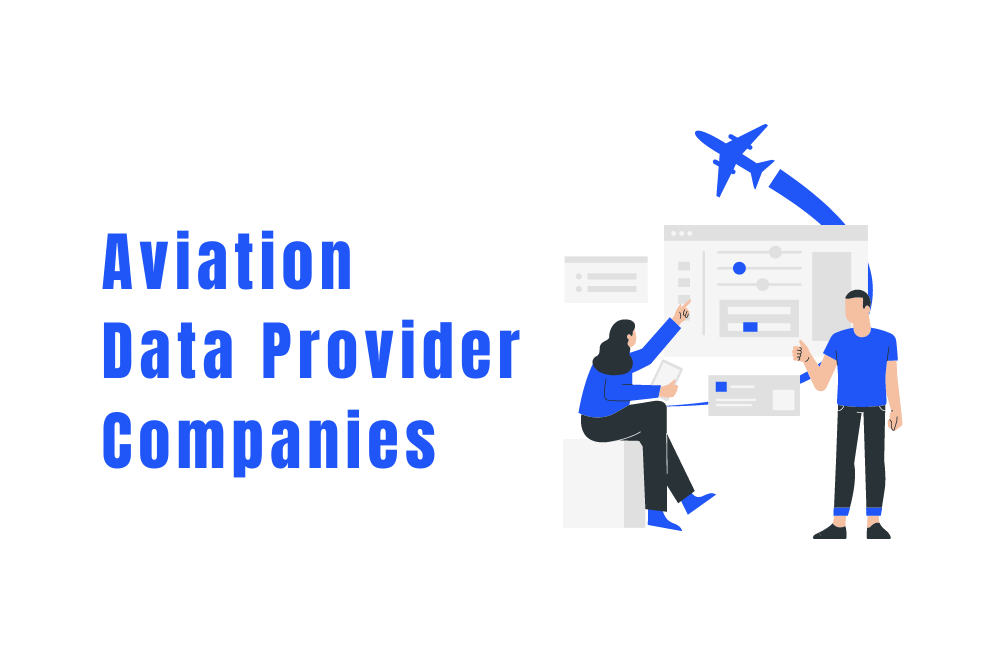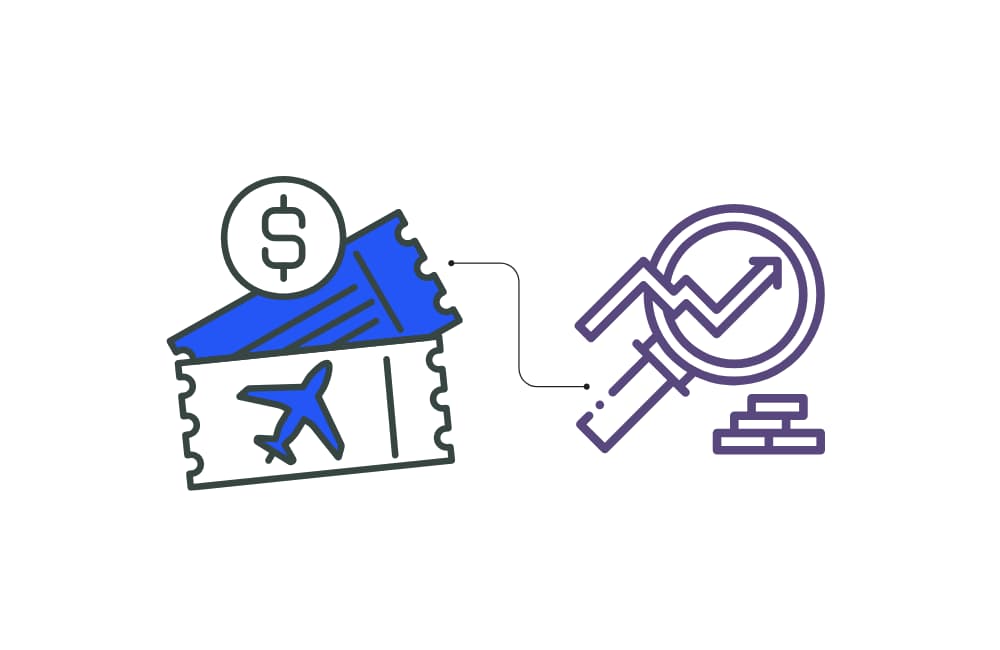If you’re building apps for travel, managing airport ops, or keeping cargo moving, the right flight data is critical. From customer notifications to route planning and analytics, one inaccurate data feed can set off a chain reaction nobody wants to deal with. And you’re not the only one feeling the pressure. In 2024, the aviation analytics market is valued at USD 2.58 billion, projected to climb to USD 7.45 billion by 2032. Demand for up-to-the-second flight status, accurate schedules, and deep historical datasets has never been higher. Whether you rely on established providers or are searching for an OAG and Cirium alternative for flight data, you will get all 3 flight status api comparison in this guide. Cirium is known for its reach and legacy, OAG brings unmatched historical depth, and FlightAPI focuses on accessibility and transparency for developers and small businesses. Read further to learn about their features, data coverage, pricing, and the sort of use-cases each one truly excels at, so you can decide who earns a spot in your tech stack and who’s better left for someone else. What Data Do FlightAPI, Cirium, and OAG Provide? When choosing a flight status api. You’re handing over the keys to your app’s reliability, customer experience, and even compliance. Here’s a detailed Overview, Data Coverage, and Sources for each. Feature / Provider FlightAPI Cirium OAG Data Focus Real-time flight status, schedules, airport movements, and pricing data Flight status, schedules, analytics, fleet tracking, emissions data Flight schedules, live status, and historical flight + airfare data Who Uses It Developers, startups, digital platforms, enterprises Airlines, airports, finance, tech giants, government agencies Airlines, airports, travel companies, financial analysts, tech businesses Real-Time Capabilities Live status, gates, terminals, delays, baggage info, airport movements Real-time updates: scheduled, active, landed, cancelled, diverted 1M+ flight status updates daily + 200K+ schedule changes Schedule Coverage Flights up to 365 days ahead Tracks 99.5% of scheduled passenger flights Covers 97% of scheduled flights Historical Data Not mentioned Not detailed (only mentions large datasets, validation) 15+ years of flight performance + 4 trillion airfare records Aircraft Coverage Data from 700+ airlines & vendors Tracks 465,515+ aircraft Not quantified in your text API Features Flight Status API, Track Flights Between Airports API Search by flight, route, airline, airport; deep status events Status, schedule, connections, historical performance, route analysis Data Sources Airlines, airports, industry partners Airlines, airports, ANSPs, GDS, Aireon ADS-B, manual validation Airlines, airports, civil aviation authorities, OTAs, GDS, proprietary schedule network Integration Notes Easy integration, clear documentation Enterprise focus, heavy validation processes Validated, cross-referenced datasets Forward-Looking Data Up to 365 days ahead Not specified 12-month forward-looking schedules FlightAPI FlightAPI is designed for today’s digital businesses, platforms, and startups that want simple, fast access to flight status, schedule, and pricing data without the complexity or cost of legacy providers. Their focus is on rapid integration, clear documentation, and cost transparency, which makes them appealing for developers, startups, and enterprises. Data Coverage Data Sources: Direct from Airlines and Airports: FlightAPI sources live data straight from airlines and airport authorities, providing the most current and reliable flight information. So that you never have to rely on outdated or cached feeds. Industry Partnerships: Additional accuracy comes from established partnerships with trusted aviation data providers, strengthening coverage and filling in any gaps. No Stale Data: All updates are delivered in real time, so you always get up-to-the-minute status direct from the authoritative sources. You can also use this API with no-code tools like Google Sheets and automation platformscheck out these tutorials to see how: ➤ Build an App to Track Flights Between Any Two Airports ➤ Create a Flight Tracking Tool with Loveable ➤ Extract Airport Schedule Data with Python ➤ Check Airport Schedule Using Google Sheet and API ➤ Track Flights Between Airports with Google Sheet Cirium Cirium is a popular option for aviation data. Trusted by airlines, airports, finance, tech giants, and government agencies alike. They just don’t provide a flight status API, but also deliver analytics, fleet tracking, emissions data, and more. Cirium’s approach is all about direct industry integration and building trust with layers of validation, redundancy, and partnerships. They’ve spent over a century refining how they gather, clean, and distribute flight data, which makes them a go-to for enterprises where accuracy and reliability are non-negotiable. Data Coverage Data Sources OAG OAG is another name synonymous with aviation intelligence, going back to 1929. While they started out publishing printed timetables, OAG is now a digital powerhouse, offering not just flight schedules and live status, but also huge archives of historic data. Their platform is used by airlines, airports, travel companies, financial analysts, and tech businesses needing reliable flight status and performance insights. Data Coverage Data Sources Wrapping Up: OAG and Cirium are undeniably popular aviation data providers, and pricing often becomes a major factor when teams compare them. That’s why searches like cirium vs oag price are so common. But choosing the right provider goes far beyond cost your product’s needs, the speed of your application, the APIs you require, and the overall developer experience matter just as much. This becomes even more important during app development, where API reliability, response speed, and ease of integration directly affect how smoothly your product performs. In this guide, we’ve covered everything you need to evaluate the best OAG alternatives for flight schedules as well as the best Cirium alternative for flight status data. We’ve also highlighted how FlightAPI handles both flight status and schedule data using a single API key and a single plan—meaning you don’t need separate subscriptions for different data types. One plan gives you both capabilities, simplified integration, and fast responses suitable for modern applications. If you’d like to test it out, you can try the Flight Status API and Flight Schedule API through the FlightAPI free Trial. And of course, you’re free to explore and compare all providers to see which one truly fits your product and business needs. Additional Resources:

Finding reliable flight price data may seem simple until you actually start searching. Then you realize how crowded the space...


